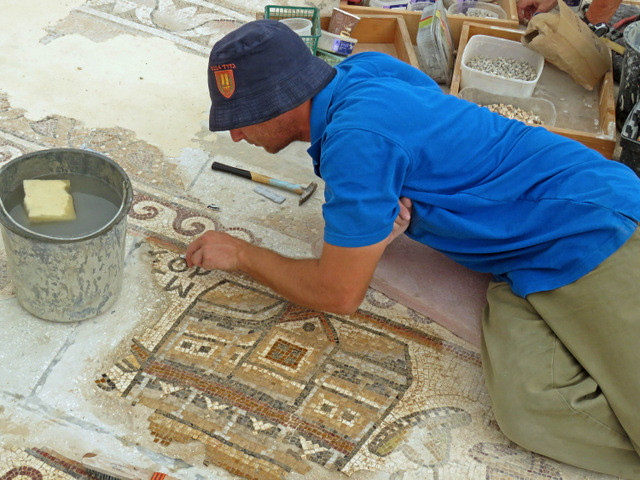Israel: Rare 1,500-year-old mosaic that depicts ancient Egyptian city is discovered

Archaeologists in the Israeli town of Kiryat Gat have discovered a 1,500-year-old mosaic which includes the rare depiction of a map, showing the streets and buildings of the ancient Egyptian city of Chortaso.
The Israeli Antiquities Authority realised that it was of Chortaso thanks to a Greek inscription which was discovered on the relic. Archaeologists Sa'ar Ganor and Dr Rina Avner, of the Israel Antiquities Authority, said: "The appearance of buildings on mosaic floors is a rare phenomenon in Israel. The buildings are arranged along a main colonnaded street of a city, in a sort of ancient map.
"A Greek inscription preserved alongside one of the buildings exposed in the mosaic indicates that the place which is depicted is the settlement [of Chortaso] in Egypt. According to Christian tradition, the prophet Habakkuk was buried in [Chortaso]. The appearance of this Egyptian city on the floor of the public building in Kiryat Gat might allude to the origin of the church's congregation."
The decorated floor was found inside a church which has since fallen down. As well as buildings there is a second part which shows animals, especially roosters, deer and birds. Ganor added: "The artist utilized [tiles] of 17 different colours in preparing the mosaic. The investment in the raw materials and their quality are the best ever discovered in Israel."
Such is the detail of the buildings that archaeologists were able to tell how many storeys there were, including balconies and galleries, roofs, roof tiles and windows.
© Copyright IBTimes 2025. All rights reserved.






















